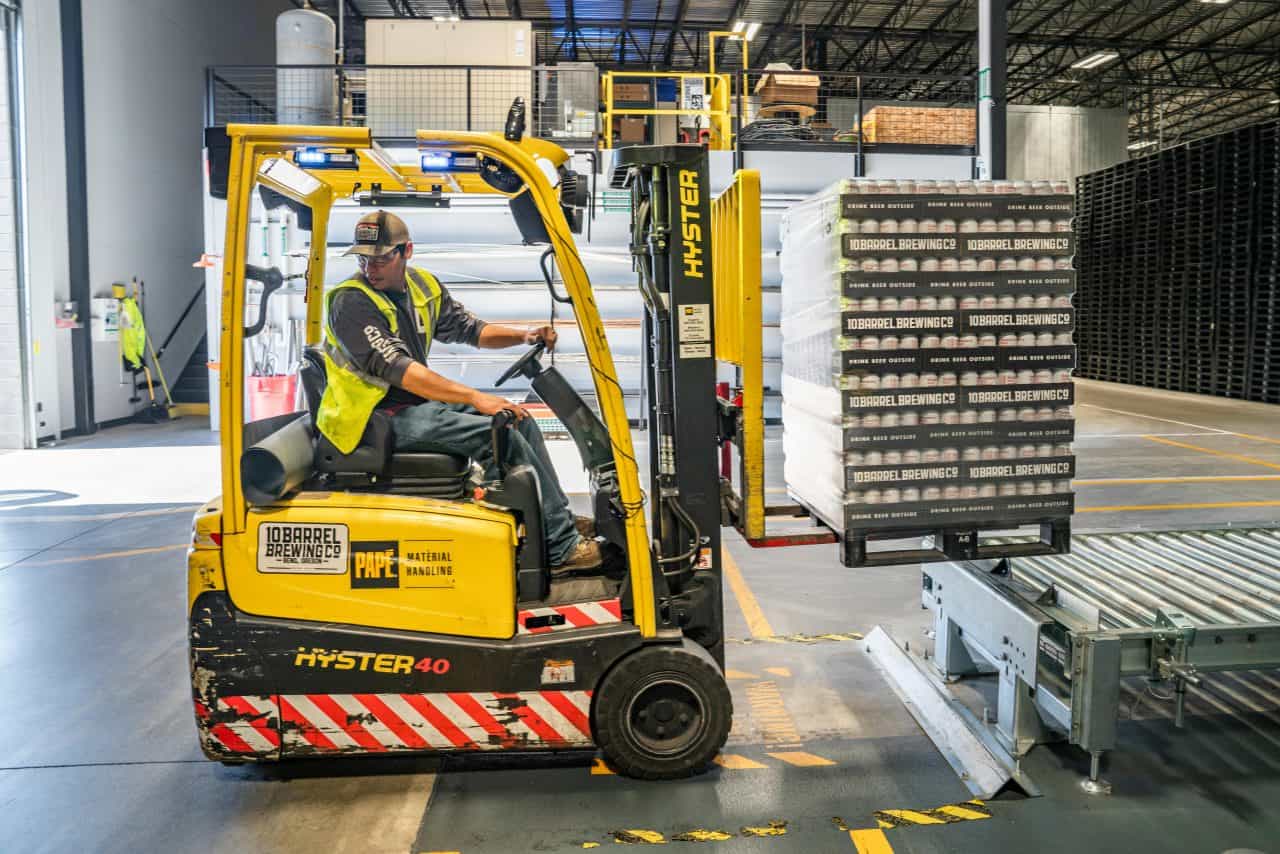The Dawn of Visual General Intelligence
On Thursday, 25th September 2025, our very own Talia Bender and Jeremy Michaels officially launched our new whitepaper, proudly announcing the dawn of Visual General Intelligence (VGI) to the world.
This is the second of six articles covering all six sections of that whitepaper – The Future of Visual Intelligence: AI Vision Through The Looking Glass – which includes our belief that VGI will be the quintessential proof point of Artificial General Intelligence (AGI). Crucially, it also outlines the role VGI plays in accelerating the paths to zero downtime and zero harm.
You can now download the whitepaper and enjoy our on-demand webinar with our founders – Nico Klingler and Gaudenz Boesch – stepping us through what VGI is and why it matters. In this article, we summarize the second section of that whitepaper.
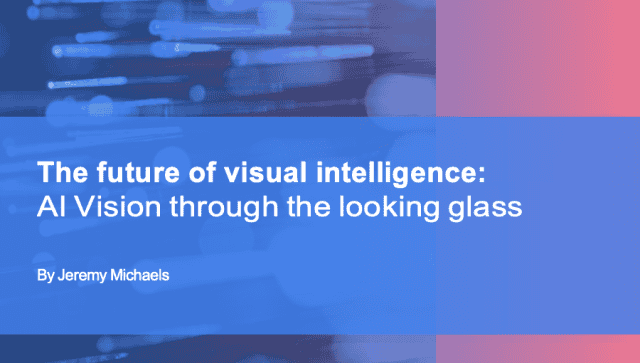
“Every safety incident, supply chain disruption, quality failure, and downtime event, happens in the visual world first. Your plant floor, warehouse, supply routes, safety protocols… all depend on human eyes catching problems before they occur.”
– Chrissie Jamieson, Vice President Marketing @ viso
See more:
- VGI Whitepaper
- Official VGI Whitepaper Launch Interview
- Q&A with the Founders: Introducing VGI Webinar
Visual General Intelligence: the next industrial revolution
The first industrial revolution was driven by steam. The second by electricity. The third by digital computing. Now, we stand at the threshold of the fourth industrial revolution, powered by Artificial Intelligence (AI).
But this revolution is not simply about smarter algorithms or faster machines. It’s about enabling systems to see and understand the world as humans do, and in many cases, better. At the heart of this transformation lies Visual General Intelligence (VGI).
In this blog, adapted from The Future of Visual Intelligence: AI Vision Through the Looking Glass, we focus on two core areas where VGI is already reshaping industries: Health and Safety and Lean and Efficiency (OEE). Together, they represent a vision for operations with zero harm and zero downtime – a future where crises are prevented before they occur.
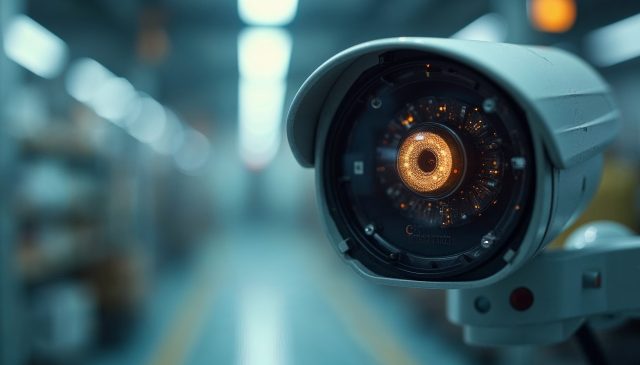
Why safety starts with sight
Health and safety has always relied on human observation. Workers look for hazards, supervisors scan for compliance, inspectors monitor conditions. Yet human sight has limitations. Eyes tire, attention fades, and complexity overwhelms.
Every accident or failure leaves a trail of missed visual cues – patterns that could have been seen but weren’t. Visual General Intelligence – or VGI – fills this gap. VGI is the capability of AI systems to understand and reason about visual information across all domains and contexts, achieving human-level comprehension and beyond.
By combining computer vision, contextual reasoning, and adaptive learning, VGI systems can spot risks in real time, at scale, and without fatigue. This marks a shift from re-active safety (responding after incidents) to pro-active safety (preventing them altogether).
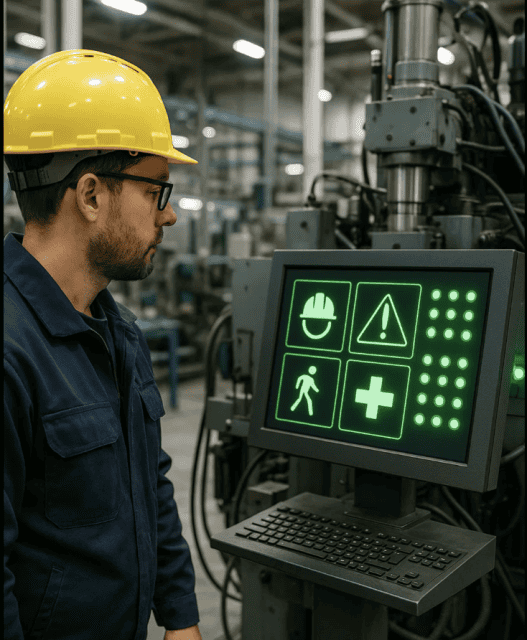
Health and Safety: the path to zero harm
1. Manufacturing: the eyes that never blink
Factories are complex ecosystems where risks evolve constantly. Traditional safety systems rely on rigid, rule-based detection – if a helmet is missing, trigger an alert. But such systems lack contextual understanding.
VGI changes this by:
- Learning from incidents – continuously improving through feedback
- Adapting to change – evolving with new layouts, equipment, or protocols
- Predicting risks – identifying hazards before they occur
Examples include:
- Ergonomic analysis – monitoring posture and movement to prevent repetitive strain
- Dynamic risk assessment – evaluating changing conditions like air quality or temperature
- Emergency coordination – guiding evacuations and alerting services in real time
The result is a workplace where safety is not just monitored but actively anticipated.
2. Construction: hazard detection for ever-changing builds
Construction sites are dynamic. What’s safe today may be hazardous tomorrow. Static monitoring systems struggle in such shifting environments.
VGI adapts to each phase of a project: from excavation to finishing. It can:
- Predict fall risks by analyzing worker positions relative to edges
- Track heavy equipment and prevent collisions with personnel
- Automate compliance documentation with visual evidence
Instead of inspectors struggling to oversee sprawling, ever-changing sites, VGI provides a constant, adaptive safety net.
3. Waste management: early-risk detection at scale
Waste facilities face unique challenges: hazardous materials, contamination risks, and environmental safety. VGI extends safety intelligence into this domain by:
- Monitoring for toxic exposure and chemical hazards
- Detecting fire risks through thermal and visual analysis
- Automating incident response with real-time hazard assessment
By combining scale with context, VGI ensures facilities remain safe while adapting to seasonal variations or changes in waste streams.
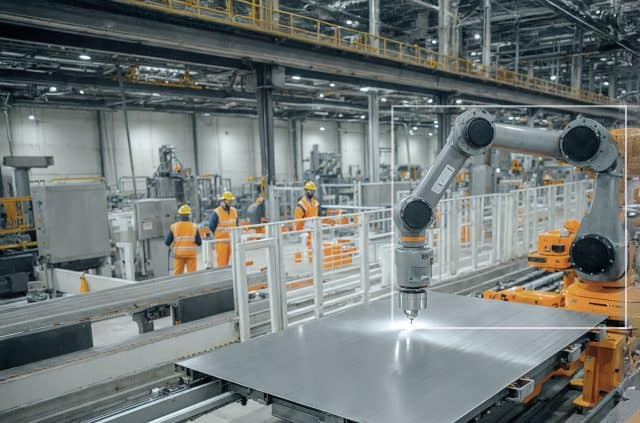
Lean and OEE: the path to zero downtime
If safety is about preventing harm, Lean and OEE are about eliminating waste and maximizing productivity. Both rely on visibility into operations. And again, VGI offers a breakthrough: moving from historical analysis to real-time optimization.
1. Manufacturing: predict, plan, and maximize throughput
Traditional OEE systems analyze data after the fact. VGI operates in real time, enabling:
- Predictive maintenance – repairing equipment before breakdowns
- Dynamic production planning – adjusting workflows instantly to demand
- Intelligent resource allocation – optimizing people and materials to remove bottlenecks
The difference is profound: downtime becomes predictable, throughput becomes maximized, and waste becomes minimized – all through contextual visual understanding.
2. Construction: always-on productivity
In construction, VGI enables lean project management by providing a continuous, visual layer of oversight:
- Progress tracking – comparing real-world progress against schedules
- Resource optimization – reallocating equipment and workers dynamically
- Quality-efficiency balance – analyzing trade-offs between speed and standards
This is not just digitization: it is truly real-time orchestration, ensuring projects stay efficient, safe, and on time.
3. Waste management: optimizing utilization
VGI also transforms waste operations by enabling:
- Dynamic route optimization – adjusting collection based on fill levels and traffic
- Facility layout optimization – reconfiguring workflows as waste streams shift
- Energy efficiency monitoring – minimizing power use while maintaining throughput
These insights reduce costs, improve sustainability, and extend asset lifespans – critical for an industry under both operational and environmental pressure.

From re-active to predictive
The common thread across safety and efficiency is the shift from reactive systems to predictive intelligence. Yesterday’s systems recorded accidents. Today’s systems alert us when accidents happen. Tomorrow’s systems – powered by VGI – will prevent accidents before they occur. Similarly, downtime will no longer be a crisis but a forecasted event – avoided through continuous adaptation.
Why it matters
The stakes are enormous. Industrial accidents cost billions annually and claim hundreds of thousands of lives worldwide. Downtime drains productivity, supply chain resilience, and competitiveness.
VGI offers more than incremental gains. It promises a step change in how industries operate:
- Safer environments where harm is nearly eliminated.
- Smarter operations where downtime is rare.
- Sustainable practices where waste is minimized.
This is the essence of the next industrial revolution.
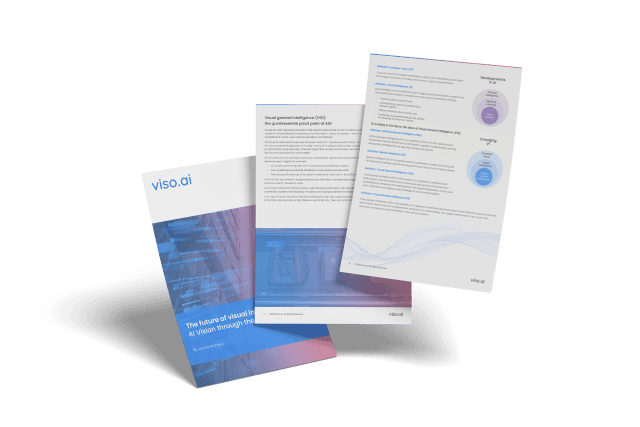
Why download the whitepaper?
This blog has outlined how VGI transforms safety and efficiency. But the full whitepaper goes deeper, providing:
- Case studies across manufacturing, construction, and waste management
- Frameworks for implementing adaptive visual intelligence
- Forecasts for how these transformations will scale globally
👉 Download the full whitepaper – The Future of Visual Intelligence: AI Vision Through the Looking Glass to see how zero harm and zero downtime can move from aspiration to reality.
